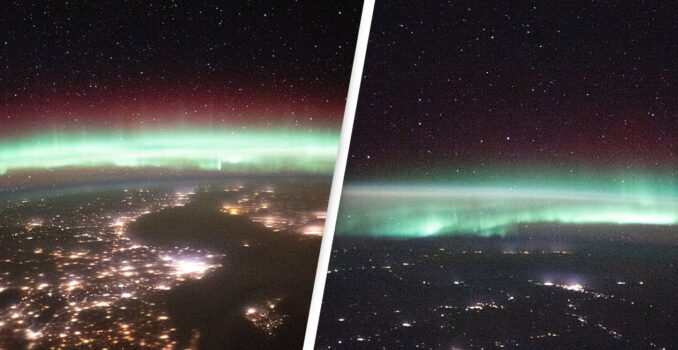Astronauts on the International Space Station have shared an out-of-this-world look at the auroras that light up the Earth’s atmosphere.
Auroras can be seen from Earth near the North or South Pole, though the view is evidently even more spectacular when framed by Earth and the universe beyond.
Images shared on the official ISS Twitter account show the glowing green lights hovering over countries and oceans, noting that astronauts caught the impressive view as the station orbited as high as 51.6° above the equator.
The ISS noted that the unique viewpoint offered an ‘awe-inspiring’ look at ‘the Earth’s aurora in between the city lights and the twinkling stars.’
The lights, named aurora borealis in the North Pole and aurora australis in the South Pole, are caused by cosmic rays interact with gasses in the upper atmosphere.
NASA explains:
When a solar storm comes toward us, some of the energy and small particles can travel down the magnetic field lines at the north and south poles into Earth’s atmosphere.
There, the particles interact with gases in our atmosphere resulting in beautiful displays of light in the sky. Oxygen gives off green and red light. Nitrogen glows blue and purple
One of the images, taken on January 12, shows ‘a starry night sky and an aurora’ above Russia, in between Ukraine and Kazakhstan, as the International Space Station orbited 264 miles overhead.
Astronauts spotted the lights again as the ISS orbited over Kazakhstan the following day, while other images were taken from above Romania, with an aurora visible over the Earth’s horizon as the city lights sparkled in Sweden and Finland.

























